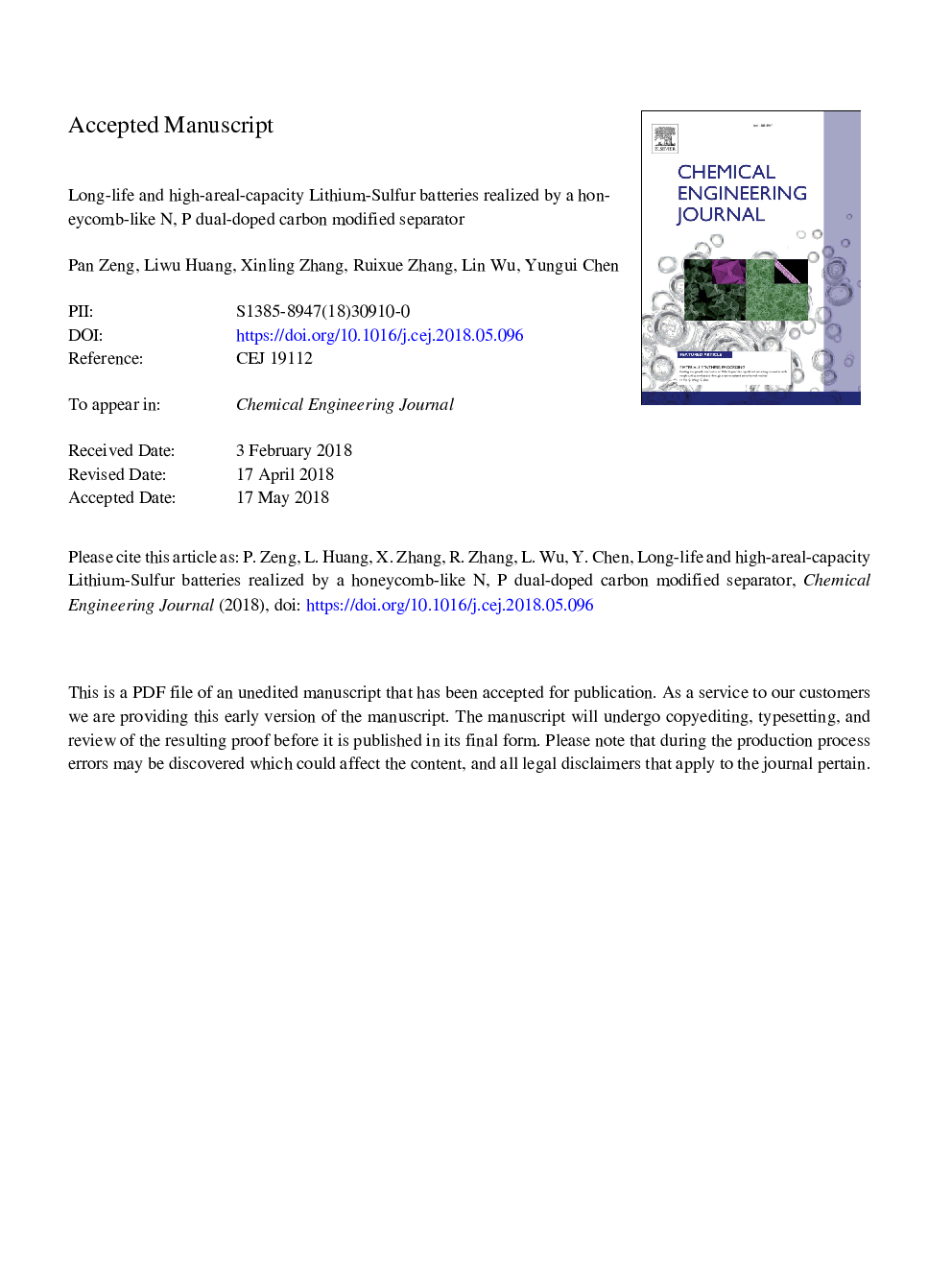| Article ID | Journal | Published Year | Pages | File Type |
|---|---|---|---|---|
| 6578731 | Chemical Engineering Journal | 2018 | 33 Pages |
Abstract
Lithium-sulfur (Li-S) batteries have caught tremendous attention as next-generation energy storage systems because of their high theoretical energy density. Nevertheless, the inferior cycle stability of Li-S batteries, mainly caused by the polysulfides migration, constrains their practical application. Herein, a honeycomb-like N, P dual-doped carbon (HNPC) modified separator is adopted to restrain the shuttle effect. Particularly, the comparative experiments to systematically explore the reaction mechanisms between HNPC and polysulfides are performed. The results reveal that HNPC coated separator can effectively immobilize the polysulfides via forming strong N-Li and P-S bonds without sacrificing lithium ions diffusion. As results, the Li-S battery employing the HNPC coated separator exhibits the high initial specific capacity of 1387â¯mAâ¯hâ¯gâ1 and can retain good capacity of 930â¯mAâ¯hâ¯gâ1 after 200 cycles at 0.2C, as well as outstanding long-term cycle durability even at high current density of 1.0C with only 0.06% capacity attenuation per cycle for over 900cycles. Moreover, stable and high areal capacity (>3â¯mAâ¯hâ¯cmâ2) is also achieved under high sulfur areal loading conditions (4â¯mgâ¯cmâ2).
Related Topics
Physical Sciences and Engineering
Chemical Engineering
Chemical Engineering (General)
Authors
Pan Zeng, Liwu Huang, Xinling Zhang, Ruixue Zhang, Lin Wu, Yungui Chen,
